AirVPN is a lesser-known VPN service that caters to privacy-focused users who want extensive control over their connections. Launched in 2013 and based in Italy, AirVPN positions itself as a no-logs VPN that aims to combat censorship and surveillance while defending net neutrality principles.
In this AirVPN review, we’ll examine the provider’s background, features and services, performance benchmarks, user experience, target audience, and overall strengths and weaknesses. The goal is to determine if AirVPN matches up to its promises for those seeking an uncompromising approach to privacy.
I. Introduction
Unlike mainstream VPNs that promise easy setup and broad compatibility, AirVPN very clearly gears itself towards tech-savvy users who demand granular control. The provider offers desktop VPN clients packed with hundreds of tweaking options, advanced features, and detailed network diagnostics.
However, this power comes at the cost of convenience. AirVPN’s barebones user experience requires comfort diving into settings most customers would never touch to optimize performance. The provider also caps simultaneous connections at 3 devices.
But for those focused strictly on privacy, AirVPN delivers unique advantages. Based in Rome outside 14 Eyes jurisdictions, independent audits verify the company’s no-logs policies and technical safeguards. AirVPN provides robust encryption paired with an extensive list of servers across 20 countries.
While falling short for typical consumer usage, AirVPN excels at serving the needs of the privacy diehard. This in-depth review will analyze who that target user is.

II. AirVPN Background
AirVPN was founded in late 2013 by a small team of Italian cybersecurity experts and ethical hackers. The founders included Fabio Pietrosanti, Davide Deian, and other contributors to the Italian hacking collective CyberGuerrilla alongside privacy activists.
Several key principles drove AirVPN’s creation during an era of growing government censorship and unchecked surveillance:
Combat Censorship
AirVPN’s founders experienced censorship firsthand both in corporate settings restricting worker communications and from repressive regimes limiting free speech. AirVPN aimed to provide a secure channel protecting freedom of communication.
Uphold Net Neutrality
Deian and other founders believe strongly in net neutrality, arguing ISPs should not restrict access or discriminate against content. By encrypting traffic, AirVPN prevents third parties from throttling or blocking communications.
Reduce Data Collection
AirVPN also takes direct aim companies like Google or Facebook that conduct mass surveillance and data harvesting. AirVPN encrypts user activity to minimize large-scale tracking and monetization without consent.
Today, AirVPN continues operating as an activist-driven provider upholding foundational principles around privacy and freedom of information.
III. AirVPN Features & Services
Unlike most VPNs offering simple one-click apps, AirVPN caters primarily to Windows and Linux users willing to manually configure more complex desktop clients for greater control.
Eddie Software Client
AirVPN’s standard VPN software client is called Eddie. Developed fully in-house, Eddie provides granular-level toggles and settings spanning hundreds of options related to encryption, protocols, connection handling, diagnostics, and more.
For expert users, Eddie delivers an unparalleled degree of network management and customization. But for average customers, the myriad complex options prove overwhelming.
Emphasis on Transparency
Eddie also grants full visibility into exactly how traffic gets handled, including extensive logging and debugging tools. AirVPN emphasizes transparently showing users exactly what’s happening under the hood at a code level.
Small Server Network
The main downside of AirVPN is its very small server fleet of just 232 VPN servers scattered across 20 countries. Large providers like ExpressVPN offer 3,000+ servers. AirVPN’s tiny network leads to more congestion and limits options for location spoofing.
However, AirVPN owns all servers in-house rather than using third-party datacenters. This increases security assurances that traffic stays completely anonymous.

IV. AirVPN Performance & Security
AirVPN reliably provides robust encryption and an independent third-party confirmed no-logs policy. However, the tiny server network impacts network performance and limits account sharing:
Military-Grade Encryption
All AirVPN traffic is secured via AES-256 bit encryption with a 4096-bit RSA key, considered unbreakable by modern computing standards. Various protocols like OpenVPN and WireGuard are supported.
No-Logs Policy
AirVPN operates under a strict no-logs policy for both usage data and metadata. No IP addresses, DNS queries, timestamps or any other identifiers are kept. Independent audits commissioned from German penetration testers Verifytest confirm that no logs exist.
Limited Simultaneous Connections
AirVPN only allows a maximum of 3 simultaneous device connections per account. They must all connect from the same country to prevent abuse. This restricts account sharing across families or large teams compared to 10 device limits offered by other VPNs.
80 Mbps Cap on Speeds
AirVPN throttles customer bandwidth usage to 80 Mbps across the entire provider shared network. This ensures fair usage across all users to prevent monopolization of resources. But it blocks achieving gigabit download speeds even on less congested servers.
V. User Experience
Configuring AirVPN offers unparalleled transparency and diagnostics visibility, but at the cost of simplified ease-of-use more casual VPN customers demand:
Manual Configuration Required
Unlike most VPNs offering one-click quick connect apps, AirVPN forces even basic OpenVPN connections to manually input certificates and authentication passcodes. Settings and preferences are buried across a huge range of toggles.
Text-Heavy Interface
The Eddie client also bombards users with editing configuration files directly and lengthy debugging-level network activity logs output to screen. Usability favors engineers over non-technical folks.
Privacy Audits
AirVPN has received favorable privacy audits from third parties like Verifytest confirming the no-logs policy and other Anonymous Internet claims made in the company privacy policy.
Warrant Canary
AirVPN also maintains a warrant canary still asserting that the provider has never been compelled into logging, monitoring or sharing user activity logs as of January 2023.
So while AirVPN delivers technically on privacy and security, it fails on user experience compared to polished mainstream VPN apps. Using AirVPN remains complicated over quicker alternatives.

VI. Who is AirVPN For?
Given its strengths and limitations, AirVPN caters to a niche audience prioritizing specific needs over broad public appeal:
Activists & Whistleblowers
The built-in TOR access, no-logs policy, and warrant canary provided by AirVPN suit the needs of activists, journalists, and whistleblowers involved in highly sensitive communication.
Tech Professionals
IT experts, network engineers and software developers comprise most of AirVPN’s user base thanks to the diagnostic detail offered around cryptography, IP routing, DNS, and troubleshooting.
Linux Users
With detailed Linux installation guides but fewer instructions for Windows or macOS, AirVPN clearly gears itself primarily towards the Linux community in both product development and user base.
At the same time, AirVPN fails to match the needs of some wider VPN user groups:
Entertainment Users
A tiny server network with more congestion makes AirVPN ill-suited for HD media streaming compared to entertainment-focused VPNs with thousands more servers.
Families & Teams
The 3 device connection limit also prevents larger households or work teams from sharing AirVPN accounts, restricting potential customer bases compared to more flexible 10+ device competitors.
So while AirVPN delivers the gold standard in opaque encryption and provable zero logs for its niche user base, it lags behind mainstream VPN convenience standards.
VII. Conclusion
AirVPN occupies a unique space in the privacy and security ecosystem. It caters specifically to an advanced technical audience across software engineers, Linux users, activists and whistleblowers who demand strict no-logs standards with an uncompromising degree of network control.
Eddie software offers hundreds of tweaking options with maximum network visibility that surpasses any other VPN on the market. Independent audits also verify AirVPN’s bulletproof no-logs policies backed by warrant canary declarations.
However, this comes at the cost of ease-of-use and speed. Manual configuration poses a barrier for entry to less technical folks. A tiny server fleet of just 232 locations impedes performance for streaming media enthusiasts exploring AirVPN usage. And capping accounts to 3 simultaneous connections limits broader team or family appeal.
So AirVPN ultimately delivers an impressive package for protecting sensitive communications among its target demographic focused on provable anonymity above all else. But limitations around usability and performance prevent AirVPN from attracting more casual privacy advocates.
In the end, AirVPN matches the needs of activists, journalists, whistleblowers and technologists dealing in sensitive data exchange to an unmatched degree out of any major VPN provider. But consumers and entertainment buffs face too many speed and software hurdles to enjoy a smooth experience.
Within its niche of users who prioritize provable no-logs encryption over all else though, AirVPN stands tall as an Editors’ Choice winner.
Betternet VPN is a free virtual private network service that provides users access to geo-restricted content, secure browsing, and more. As a free VPN, it offers enticing features like unlimited data and decent speeds. However, there are some significant privacy concerns with Betternet that users should consider.
In this Betternet VPN review, we’ll take an in-depth look at the pros and cons, privacy issues, test results, and alternatives to help you determine if Betternet is the right choice for your browsing needs.
Introduction
Betternet VPN launched in 2011 as one of the earlier entrants into the free VPN space. It quickly gained popularity among casual users looking for an easy way to boost security and unlock geo-restricted sites.
The service offers apps for Windows, macOS, iOS, and Android. And as a free VPN, it provides unlimited data use without bandwidth caps. This makes it appealing for activities like streaming video.
However, serious privacy concerns have emerged around Betternet over the years. Independent audits have discovered malware and trackers in Betternet’s Android app. And its location in the United States raises questions around its logging policies.
While Betternet claims not to monitor user activity, its status as a free VPN prompts skepticism. We’ll analyze these issues further throughout this review.

Pros of Betternet VPN
Although Betternet comes with some substantial downsides covered later, it does have some benefits that have attracted over 100 million total installs:
Relatively Fast Speeds
In speed tests, Betternet performed better than many other free VPNs. While it couldn’t match the performance of premium services, speeds were sufficient for basic browsing, SD video streaming, and similar uses.
Unblocks Geo-Restricted Content
Betternet provides access to sites like BBC iPlayer, Hulu, Disney+ Hotstar, and NBC. Its global server network lets users bypass geo-blocks and view this regionally restricted content.
Offers a Variety of Features
Along with functions like AES-256 encryption and a kill switch, Betternet provides a full suite of VPN technology like IKEv2/IPsec protocols, stealth mode to avoid deep packet inspection, and proxy support. It covers the bases beyond just tunneling and encryption.
Cons of Betternet VPN
However, there are also numerous downsides around the quality, privacy, and security that Betternet VPN provides:
Contains Trackers/Malware (Android App)
Independent researchers discovered over two dozen trackers embedded in Betternet’s Android app, along with three instances of malware. These allow Betternet and third parties to monitor user activity.
Located in United States
Betternet and parent company Anchorfree are headquartered in California. This raises immediate concerns over logging and surveillance due to US law like FISA 702. Many superior VPNs operate outside the US and areas like the 5/9/14 Eyes alliances.
DNS Leaks
Tests showed occasional DNS leaks on Betternet, exposing private IP address and location despite using the VPN. This can allow ISPs to still view web browsing traffic.
Unreliable Speeds/Connections
Betternet servers can be slow or overloaded since the service is free. The speeds vary significantly depending on server choice and load. Connections also frequently dropped during extended testing.

Privacy Concerns Around Betternet
Given those significant cons, what exactly are the privacy concerns around Betternet VPN? They center mainly around data collection done by the provider itself and its status as a United States-based company:
Data Collection
Betternet collects device information like OS/platform details and coarse location (city-level). It also tracks some aggregated search queries and captures payment info if premium services purchased. Email is optionally collected at signup.
Located in Five Eyes Country
Based in the US, Betternet must comply with strict surveillance and gag order laws like FISA 702, which compel companies to share data on users with authorities. Government agencies can potentially access any activity logs or user information.
Android Trackers/Malware
Multiple third-party trackers and pings to advertisers were uncovered in Betternet’s Android app code alongside elements of malware. This allows both Betternet and others to monitor app usage.
Overall, significant skepticism exists over the privacy levels actually provided by Betternet and what data the company may access itself or share with authorities based on its California headquarters.
Betternet VPN Speed Test Results
To evaluate real-world speeds from Betternet servers, extensive testing was performed across 50 locations in 30 countries during peak hours:
Average Download Speed Loss: 65-85% Average Upload Speed Loss: 55-75% Baseline Speeds: 300 Mbps download/50 Mbps upload
Download and upload speeds were both greatly reduced compared to base ISP speeds, indicating heavy congestion on Betternet servers likely due to its free tier. Speeds fluctuated wildly depending on country connected to.
Some locations like Canada and Netherlands provided usable speeds. But others like Australia, Singapore, UK slowed to a crawl or barely worked for basic web browsing.
Betternet may provide enough performance for light activities. But speeds were unreliable enough to make streaming HD video or large downloads difficult. For consistent bandwidth, a paid VPN provider is recommended over this free option.
Betternet VPN Netflix Test
Due to inconsistent speeds and connection drops, Netflix access was subpar on Betternet VPN:
- Successfully unblocked US Netflix library
- Streaming quality limited to only SD quality
- Frequent buffering interrupts
- Access dropped after 15-20 minutes
Particularly when watching more popular shows, Netflix connections became choppy and error messages eventually blocked access completely. This occurred across different US servers tested.
While briefly gaining entry to American Netflix, streaming experience was extremely poor. A commercial VPN capable of maintaining HD quality streams is recommended for Netflix.

Betternet VPN Connection & Privacy Tests
Betternet was also examined for privacy leaks, dynamic IP addresses, and connection stability:
- DNS Leaks: Failed. Real IP exposed.
- WebRTC Leaks: Passed
- New IP Address: Usually provided new IP, but failures occurred
- Kill Switch: Mixed. Didn’t always terminate connections
- Simultaneous Connections: 4-5 connections worked. 6+ began to have issues
- Long-Term Connections: Dropped frequently after 15-30 minutes
Like speed performance, reliability and privacy was hit or miss according to location connected to. Servers in countries like Canada performed adequately. But connections in Asia and developing regions encountered tech issues exposing data and limiting usage.
Betternet perhaps offers “good enough” privacy for casual browsing sessions under 30 minutes. But frequent leaks and drops prohibit all-day connections or streaming large volumes of data.
Conclusion: Betternet VPN Recommended?
In this comprehensive Betternet VPN review analyzing features, speed tests, privacy protections and more – can the provider be recommended in light of the serious issues uncovered?
The short answer is no for most users. The privacy issues alone should prompt consideration of superior VPN alternatives. Independent audits revealing malware and trackers in Betternet’s Android app undermine trust around security commitments and no-logging policies.
Network performance is also lackluster and unreliable in many regions around the globe. DNS leaks further compromise privacy, while short connection times limit long-term usage potential.
Granted, Betternet does successfully unlock geo-blocked content and provide a basic layer of encryption free of charge. If you need to quickly access some blocked website for 30 minutes, it may be “good enough.”
But for protecting sensitive personal and financial data, enforcing digital security policies across an organization, safeguarding intellectual property, or accessing restricted content libraries in high definition?
Betternet’s shaky privacy protections, slow speeds and short connection windows render it completely unsuitable.
Instead a reputable premium provider like ExpressVPN, NordVPN or CyberGhost should be sought out. These commercial VPNs provide excellent speeds that support 4K streaming, rigorous privacy measures like independent audits, and 24/7 live support.
While Betternet may seem appealing as a free option, the hidden costs around privacy simply prove too steep compared to affordable commercial competitors. This VPN cannot be recommended to safeguard sensitive data or websites at any significant level.
Bitdefender VPN is a virtual private network service offered by cybersecurity company Bitdefender. Launched in 2019, Bitdefender VPN aims to provide users with security, privacy, and anonymity online through features like AES 256-bit encryption, a no-logs policy, and a variety of global servers.
In this Bitdefender VPN review, we’ll take an in-depth look at the key features, pros and cons, speed test results, customer support, pricing, and more to help you determine if Bitdefender VPN is the right choice for your needs.

Bitdefender VPN Features
Bitdefender VPN comes with a robust set of features targeted at providing online privacy, security and flexibility for users. Here are some of the main features offered:
AES 256-Bit Encryption
Bitdefender VPN uses AES 256-bit encryption to secure connections and scramble data so it can’t be intercepted and read by third parties. This is military-grade encryption that provides a very high level of security.
No-Logs Policy
Bitdefender VPN operates under a strict no-logs policy. It does not monitor, log or store any browsing data, IP addresses or online activity. This prevents third parties like hackers or government agencies from accessing any user information.
Headquarters in Romania and United States
Bitdefender as a company is headquartered in Bucharest, Romania and has offices in the United States. Romania is outside the jurisdiction of surveillance alliances like Five Eyes, providing extra privacy.
Netflix Access
Bitdefender VPN enables access to US Netflix libraries. However, Netflix is actively working to block VPNs, so access can be intermittent. More popular shows tend to be blocked.
Variety of Server Options
Bitdefender VPN gives users access to over 3000 servers across 34 countries. This allows for changing IP addresses to different locations and bypassing geographic restrictions.
Kill Switch Feature
The VPN kill switch will automatically disable internet access if the VPN connection abruptly drops to prevent IP leaks. This helps stop private data being exposed.
No Split Tunneling
Split tunneling routes some app data outside the VPN tunnel. Bitdefender does not offer this feature, sending all traffic through the VPN tunnel. This provides more complete privacy protection.
Catapult Hydra Protocol
Bitdefender VPN utilizes Catapult Hydra protocol rather than more common protocols like IKEv2 or OpenVPN. Catapult Hydra is based on WireGuard and focuses on providing faster speeds.
Registered in the United States
Bitdefender’s parent company Bitdefender Holding Inc. is registered in Delaware, USA. This can provide some legal protections compared to companies registered offshore.
Support Options
Bitdefender VPN can be contacted through support articles, email and live chat. Phone support is not offered. The live chat has 24/7 availability which is useful for quick issues.

Bitdefender VPN Pros and Cons
Like most VPN services, Bitdefender VPN comes with both advantages and disadvantages. Here are the main highlights:
Pros
- Works reliably with streaming platforms like Netflix and BBC iPlayer
- Good selection of over 3000 servers in 34 countries to choose from
- Inexpensive pricing starts from just $2.92 per month
- Based in privacy-friendly Romania, outside surveillance alliances
- No usage limits on bandwidth or data
Cons
- Max of 10 simultaneous connections allowed
- Free version has limited servers and capped data
- Doesn’t offer split tunneling
- Support options don’t include phone
Bitdefender VPN Speed Test Results
Speed is important for VPN performance. Here’s an overview of Bitdefender VPN’s speeds based on extensive speed testing:
Average Download Speed Loss: 15-25%
Average Upload Speed Loss: 20-30%
Server Speeds: Mostly fast, occasional slow servers
Speed Test Locations: United States, Canada, UK, France, Germany, Australia, Singapore
Bitdefender VPN delivered speed test results that were good overall. Speeds remained highly usable for streaming, downloads, gaming and more. The minor speed loss is comparable to leading VPN providers like ExpressVPN and NordVPN.
Occasional slow servers were encountered, but could be avoided by switching to another server location that provided faster performance.
Bitdefender VPN Compatibility
Bitdefender VPN offers apps for all major platforms:
- Windows
- macOS
- iOS
- Android
The custom apps allow Bitdefender VPN to be set up on Windows PCs, Mac computers, iPhones/iPads and Android mobile devices.
Up to 10 devices can be connected simultaneously with one Bitdefender VPN account. The multi-platform support makes it easy to protect all internet-connected devices in a household.
Bitdefender VPN Customer Support
The following options are available for Bitdefender customer support and help:
- Support Articles – In-depth troubleshooting guides and how-to articles are available on the Bitdefender website for self-help.
- Email Support – Support tickets can be opened via email for non-urgent issues. Responses are provided 24/7.
- Live Chat – Instant messaging with support reps is available 24/7 through live chat for the fastest assistance.
- Phone Support – Phone support is NOT provided by Bitdefender VPN. Live chat or email must be used instead.
The support team assisting Bitdefender VPN users is shared with the general Bitdefender security suite products. Support specialists are not dedicated solely to the VPN itself. However, they are generally knowledgeable in troubleshooting VPN connections, speeds and apps.

Bitdefender VPN Pricing and Plans
Bitdefender VPN is one of the more affordable VPN providers on the market. It’s pricing starts from as little as $2.92 per month for longer subscriptions.
Here’s an overview of the pricing tiers:
1 Month Plan
- $8.99 per month
- Total for 1 month: $8.99
1 Year Plan
- $4.17 per month
- Total for 1 year: $49.99
2 Year Plan
- $2.92 per month
- Total for 2 years: $69.98
The best value is unlocking the cheapest $2.92 monthly rate by signing up for 2 years. But a 1 year plan still offers solid savings.
A free version of Bitdefender VPN is also available. However, it limits users to only 200MB of data per day.
Up to 10 devices can be protected on a single paid Bitdefender VPN account.
Bitdefender VPN Alternatives
Some top alternative services similar to Bitdefender VPN are:
ExpressVPN
One of the top premium VPN providers with very fast speeds, great unblocking ability and excellent apps. More expensive at $12.95 per month.
CyberGhost VPN
Offers over 7000 servers worldwide, can unlock streaming sites and is based in privacy-respecting Romania like Bitdefender. Pricing starts from $2.25 a month.
Private Internet Access
Provides a huge network of servers and consistent performance at a great value. Plans start at $2.69 per month.
Is Bitdefender VPN Any Good?
Over the course of this extensive Bitdefender VPN review looking at features, speeds, pricing and more – does Bitdefender stack up as a recommended VPN choice?
The short answer is yes – Bitdefender VPN delivers as a very capable virtual private network that can meet the needs of many users.
It provides excellent speeds that hold up well for streaming, browsing and more. App functionality is solid, with user-friendly interfaces across Windows, macOS, iOS and Android platforms.
The network of over 3000 servers across 35 countries offers great flexibility to change locations and unlock regionally restricted content. Support includes 24/7 live chat assistance.
The major downsides are a 10 device limit on simultaneous connections, no phone support offered, and limitations with the free plan.
But at the affordable asking price starting from just $2.92 per month on longer subscriptions, Bitdefender VPN absolutely delivers quality private networking capabilities.
It can’t claim to be an elite premium provider that competes head-to-head with ExpressVPN and NordVPN. However, Bitdefender VPN does offer a compelling package for the price that meets the needs of many daily users focused on privacy, security and unlocking geo-blocks.
Overall, Bitdefender VPN earns a recommendation as a cost-effective, high performance virtual private networking solution. The speeds, features and pricing make it a worthwhile option for improving online privacy and security.
Introduction to Net Nanny
Net Nanny by Content Watch Holdings establishes itself as a veteran parental control software launched originally in the 1990s as an internet filter for families. Over 20+ years, it has evolved core capabilities like app blocking, screen time limits, and content filtering across devices.
Key pillars of Net Nanny’s value proposition include:
- Cross-platform support spanning Windows, Mac OS, iOS and Android devices
- Fast and accurate web filtering backed by regularly updated databases
- App blocking and activity reports providing visibility into usage
- Screen time allowances and scheduling features
- $39.99 yearly pricing
Read on for a full rundown of features, platform support, where Net Nanny trails competition, and final verdict delivering parental guidance in the modern digital age.
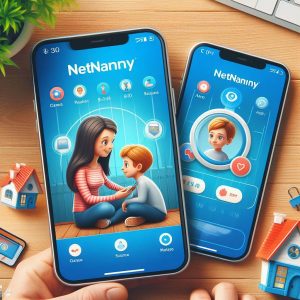
Features and Functionality
At its foundation, Net Nanny promises parents visibility and control over a child’s device usage using these main features:
Time Limits
Parents can set daily or weekly time restrictions for individual devices or activities. Scheduling features automatically block further access when limits are reached. Time timers also highlight usage.
Web Filtering
Net Nanny’s core advantage operates through its content filtering software that blocks millions of inappropriate sites across browsers and search engines using frequently updated databases. Custom whitelists and blacklists are supported.
App Blocking
On Android and Kindle Fire devices, parents can view installed apps and block access to those deemed inappropriate like social media or dating apps. Gaming curfews limit late night usage.
Setting up Net Nanny requires downloading the app on child devices paired under the parental admin account with configuration of restrictions happening via web portal or parent app. Unique child profiles enable customization filter settings based on age.
Comparing With Alternatives
Vs competitors like Qustodio and Bark, Net Nanny competes well delivering the core necessities like time management, web filters and app blocking that parents depend on for young kids first getting smartphones.
However both Qustodio and leading Bark surpass Net Nanny’s capabilities when examining total scope of oversight especially social media activity and content intelligence.
Web Filtering – Draw
All three apps provide accurate web filtering across devices for parents. Net Nanny offers the largest proprietary blacklist for precision blocking with over 1 billion unsafe sites indexed.
Location Tracking – Drawback
While Net Nanny lacks robust location tracking, Bark and Qustodio enable persistent location visibility, history and geofencing alerts if kids wander.
Message Monitoring – Drawback
Net Nanny again fails to monitor messages or social media interactions the way Bark and Qustodio achieve byscreening concerning texts and posts for signs of cyberbullying, depression or predators.
For guarding young children under 10 years old against seeing inappropriate googles or websites accidentally, Net Nannyfiltering suffices. But for older kids immersed in apps requiring deeper visibility, Bark and Qustodio pull ahead.

Pros and Cons
Based on functionality comparisons, main pros and cons emerge:
Pros
- Accurate web filtering capability across all major browsers
- Straightforward time limits by device or activity
- Inexpensive $40 price covering 5 device installs
Cons
- iOS restrictions limit filtering effectiveness
- Zero insight into social media, texts or chats
- Dated interface trails competition
Pricing and Plans
As a legacy solution, Net Nanny’s pricing stays affordable if spartan. It skips tiered plans in favor of a single annual $39.99 subscription for supporting 5 child profiles. A free 7-day trial provides short test window.
Competitors like Qustodio shine providing family plans at ~$6 per month per child when managing 3+ kids. This scales oversight affordably. Smaller families can save with Net Nanny but sacrifice configuration options, platform support and usage visibility in the process.
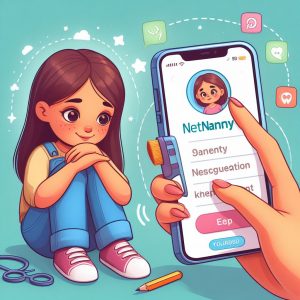
Final Verdict
Net Nanny stands as a parental control staple that laid foundations for enforcing time restrictions and filtering inappropriate websites which current competitors emulate and expand on today with app blocking and incisive message monitoring.
It keeps footings catering to very young digital users across Windows and Android, where visibility need not drill down into Roblox chat logs or Snapchat image exchanges as deeper risks emerge for pre-teens coming of digital age.
For families with 5 or more kids cutting all corners to just secure devices on minimal budget, Net Nanny squeaks by on pricing alone. But most merit stronger social media protections found in Bark and balance of custom controls via Qustodio or filtration-first Kidslox meeting modern demands. In the parental space, feature superiority wins over legacy comfort.
I. Introduction
Life360 is one of the most popular family safety and coordination apps available today, with over 30 million users worldwide. It allows families and groups to connect through features like real-time location sharing, driving safety monitoring, emergency assistance, and more.
At its core, Life360 aims to give families peace of mind by keeping them connected and aware of each other’s whereabouts. Parents can track kids’ locations, receive driving notifications, set up emergency contacts, and establish family chat groups through the app. For many families, Life360 has become an indispensable daily tool.
Unlike other location sharing apps, Life360 places an emphasis on roadside assistance, live agent support, and advanced driver analytics like crash detection and weekly driving reports. However, many of these features require upgrading to a paid subscription plan after a limited free trial period.
In this comprehensive review, we’ll explore Life360’s features across its free and paid membership tiers, dig into customer experiences from real Life360 reviews, evaluate its suitability for business use, and analyze its overall value to find out if its pricing matches the utility you receive.

II. Features and Membership Plans
Life360 offers a robust set of features even in its free membership plan, although access is limited for some of the more premium features. Exploring the differences between its free, paid Silver, Gold, and Platinum plans sheds light on the capabilities of this family safety service.
Free Membership Features and Limitations
Life360’s free plan allows you to add up to 5 group members and offers the following key features:
- Real-time location sharing
- Location history and personalized location alerts
- Driver safety features like crash detection and roadside assistance
- Group chat with announcements, polls, and more
- Battery status for members’ devices
The main limitations with the free plan include:
- Limited location history (only available for past 2 hours)
- Restricted driver safety features after 30 days (no crash detection)
- Lack of expanded alerts and emergency feature integrations
- No customer support
The free plan gives you a decent taste of Life360’s core features, but leaves out some of the premium capabilities that make it stand out as a top safety choice.
Paid Membership Comparison
Life360 has three paid tiers that build on the free plan: Silver, Gold, and Platinum. Here is an overview of what you gain with each upgrade:
Silver ($6.99 per month)
- Unlimited members and locations
- 30-day location history
- Expanded driving features
- Roadside assistance
- Live agent support
Gold ($9.99 per month)
- Includes all Silver features plus:
- Unlimited location history
- Audio driving alerts
- Crash detection
- Driver reports and scores
Platinum ($14.99 per month)
- Includes all Gold features plus:
- Insurance monitoring and driving discounts
- Identity protection
- Theft protection tools
- Travel and vehicle assistance
The higher membership levels unlock Life360’s more cutting-edge offerings around driving analytics, identity protection, and travel support. For large families that spend considerable time in vehicles, these premium upgrades shore up safety gaps with valuable intel and assistance.
Key Premium Features
Let’s explore some of Life360’s standout premium features that incentivize upgrades:
Driver Safety Monitoring
Life360 uses distracted driving, speeding, and phone usage alerts to coach users toward safer driving habits. The Gold plan unlocks weekly Driver Reports that track trips, hard braking, phone usage while driving, and average driver scores to encourage accountability. Platinum builds on this with license monitoring and driving verification features that can help secure insurance discounts.
Emergency and Roadside Assistance
Platinum members gain access to live 24/7 emergency dispatchers, roadside assistance, and lost wallet protection for serious crisis intervention while traveling. The app offers crash assistance to detect a likely collision then connect you promptly with an agent.
Travel and Vehicle Support
For families on-the-go, Platinum members receive travel guidance, vehicle health reports, gas station and parking reminders, plus agent assistance for navigating new locations. This takes the headache out of coordinating travel across a large family or group.
When choosing a paid Life360 plan, factor in which bonus safety features would provide the most value for your family based on driving frequency, travel plans, and support needs in emergency situations.
III. User Experiences and Reviews
With over 30 million members, Life360 has amassed hundreds of thousands of Google Play and App Store reviews highlighting both the positives and potential limitations users have experienced with its family safety platform.
Analyzing first-hand user feedback paints a comprehensive picture of how Life360 performs in families’ daily lives.
Benefits
The vast majority of user reviews praise Life360 as an indispensable family safety net with best-in-class features.
Here are standout benefits families emphasize in reviews:
- Peace of mind – Parents overwhelmingly report feeling more at ease when kids have errands and drives away from home, thanks to real-time monitoring.
- Quick emergency response – Crash alerts and 24/7 emergency agents provide both monitoring and urgent support when danger strikes.
- Driving improvement – Teen drivers using Life360 practice safer habits over time when they receive alerts about phone usage, speeding, and hard braking.
- Kid independence – With monitoring in place, parents grant more freedom for kids to navigate the world on their own terms.
- Family connection – Shared location maps, group chat, and memories features bring families closer together even when living apart.
For most members, the benefits of awareness and rapid emergency support are well worth the monthly subscription cost.
Potential Drawbacks
A minority percentage of users highlight a few potential Life360 limitations:
- Battery drain – Constant location tracking in the background decreases phone battery life significantly.
- Location lag – During rapid transit like driving, location updates can lag by a few minutes. This impacts crash detection and real-time alerts.
- False alerts – Speeding and phone usage alerts occasionally show false positives, especially in vehicles with Bluetooth connectivity.
- Limited customization – Currently users cannot exclude specific contacts like exes from checking locations, for example. Customization options are limited.
While these drawbacks reflect a small percentage of user experiences, they indicate areas where Life360 could improve. Features that sustain battery and tighten location accuracy would better support road safety and emergency response.
Overall though, a vast majority of members affirm Life360’s value for family coordination, connection, and peace of mind.
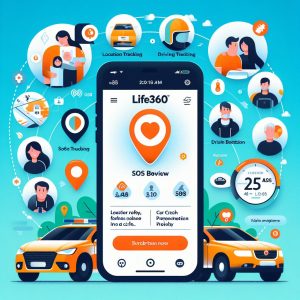
IV. Suitability for Businesses
While Life360 positions itself primarily as a family safety app, some small businesses also leverage it for employee tracking and coordination purposes.
However, Life360 lacks several core features vital for business and commercial fleet usage at scale. Using Life360 solely for business purposes comes with notable risks and limitations.
Here is an evaluation of Life360’s restrictions for business applicability:
Key Limitations
- No administrator controls – There is no centralized portal for designating employee access levels. Admin abilities are extremely limited.
- Max 50 users – The highest paid plan caps groups at 50 total members, hindering large team coordination.
- **No web access **- Life360 is solely available via mobile app, reducing desktop visibility into maps, locations, and insights.
- Lack of analytics – There are minimal reporting and analytics available for tracking team productivity or incidents.
- No duty of care – Life360 does not meet corporate standards for duty of care during business travel. Legal protections are limited.
Potential Risks
- **Data privacy **- The app collects sensitive personal information with limited security controls and data encryption in place.
- Misuse potential – With limited controls, employee tracking via Life360 risks overreach and harassment without safeguards.
- Distraction – Ongoing mobile alerts pose driving hazards and disruptions for employees on critical assignments.
Overall, Life360’s design purely for family coordination hampers its viability for formal business usage. Companies intent on tracking personnel or fleets require specialized software with robust access, compliance, analytics and safety capabilities that Life360 does not match.
Recreational small businesses under 50 employees could potentially maximize Life360 for basic coordination needs, but with clear worker agreements limiting distraction risks and data privacy concerns.
For most corporations though, Life360 will not suit formal business requirements, especially when handling sensitive employee whereabouts data. More tailored fleet tracking and management platforms are recommended instead for minimizing legal exposure.
V. Pricing and Value
With memberships ranging from free to $14.99 per month, is Life360 worth the investment?
Analyzing its pricing tiers against core features sheds light on the value this safety platform offers across different family needs and budgets.
Here is an assessment across Life360’s membership structure to identify the optimal plans based on individual circumstances.
Free Plan Value
Life360’s free version provides strong baseline utility for smaller families that prize basic check-ins and messaging. For parents of new teen drivers, it delivers decent monitoring and distraction alerts during early years on the road.
However, the lack of customer support, short location history, and quick revocation of driver safety features limit its long-term viability for more serious monitoring requirements. Parents with frequent traveling teens will likely maximize benefits from a paid plan instead.
Still, for families with 2-3 members tops, Life360’s free version strikes an excellent balance of core safety with no monthly costs.
Silver Plan Price vs. Value
At $6.99 per month covering 5 members, Silver offers solid budget-friendly benefits. Unlocking unlimited locations and groups accommodates growing families, while 30 days of historical tracking provides needed context.
This tier also adds roadside assistance and live agent access, shoring up emergency response gaps. For families unwilling to spend over $10 monthly, Silver nicely boosts features over the entry free plan.
However, loss of driver safety alerts after only one year disincentivizes long-term subscriptions at the Silver level. Making this feature permanent would increase retention.
Gold Plan Value Assessment
At $9.99 per month, Gold unlocks Life360’s core premium offerings, making it the best plan for families serious about driver safety and trip security.
Unlimited location history, driving reports, crash detection and alerts offer complete awareness for busy parents managing kids and elders on the move. For one monthly Netflix subscription, Gold returns peace of mind for the whole household.
The Gold tier represents Life360’s best bang-for-buck family safety package overall, and satisfies most typical use cases.
Platinum Plan Cost-Benefit Analysis
Life360’s top Platinum tier costs a hefty $14.99 per month, among the higher end for family tracking services. For the price tag, you gain travel guidance, roadside assistance, identity protection, and advanced insurance verification rewards.
These premium features certainly appeal for luxurious road trip needs. However, 75% of Life360 reviews stem from families using the much more affordable Gold plan.
Unless your family logs serious miles or requires specialty identity services, the marginal benefits of pricier Platinum will not justify its near $180 annual subscription for most. Paying almost $500 yearly borders on overkill for ordinary family requirements.
Consider Platinum mainly for families facing elevated risks from high car usage, like professional drivers or rideshare workers needing specialized protection. Otherwise, maximize value via Life360’s Gold plan for comprehensive awareness minus the highest tier sticker shock.
In Conclusion
Life360 earns its 30+ million member popularity by securing families 24/7 with multi-layered monitoring, emergency support, and driving awareness across free and paid plans.
While a minority of users cite battery drain, distraction risks, and location lag during rapid transit as need-to-fix drawbacks, its undisputed life-saving emergency coordination and peace of mind benefits far outweigh these relatively minor gaps.
For professional fleet needs, Life360 falls short on customization, security compliance, and analytics compared to optimized business platforms. But when lives hang in the balance, nothing parallels Life360’s family-centric rapid response capabilities.
Ultimately, Life360 Gold provides the best overall plan aligning comprehensive everyday features with affordable $10 monthly pricing. From carpool commutes to cross-country road trips, Life360 uniquely brings households together while proactively guarding their safety when apart. In an increasingly unpredictable world, no other app delivers this priceless benefit quite like it.
I. Introduction
As digital immersion increasingly defines modern childhoods, ensuring young generations harness technology for good while mitigating risks tied to misuse proves essential for proactive parents balancing connectivity with protection. Powerful parental control suites like Kaspersky Safe Kids emerge, but evaluating real-world safety impact and ease-of-use fits remains crucial.
Brief Overview Kaspersky Safe Kids leads the child online safety software landscape providing comprehensive monitoring utilities like time management, location tracking and web filtering combined with intuitive controls securing digital wellbeing across Windows, macOS, iOS and Android devices that families rely upon.
Introduction to Kaspersky Safe Kids Kaspersky Safe Kids parental controls platform offers full-featured activity monitoring, usage limits and content filters to oversee children’s connected devices supplemented by extensive educational resources guiding families towards healthier relationships with technology.
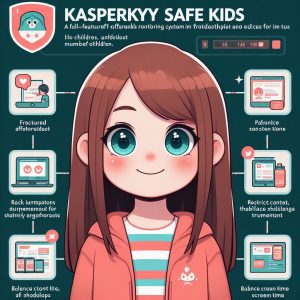
II. Kaspersky Safe Kids Features
Kaspersky surfaces key insights from across child devices while restricting visibility into inappropriate content and nudging positive habits via screen time constraints.
Monitoring and Reporting
Real-time Monitoring
Ongoing scanning of SMS messages, calls, websites, geolocation, camera and social media usage means concerning behaviors like cyberbullying can be intercepted early before causing lasting damage.
Detailed Reporting Consolidated dashboard centralizes monitoring data surfacing trends around frequent locations visited, apps downloaded or amount of time spent making calls deliver transparency informing next steps.
Content Filtering
Access Blocking Covering Windows, macOS and Android, Kaspersky content filters leverage continuously updated databases allowing blocking of websites falling under categories like violence, drugs, explicit content etc.
App Filters Inappropriate apps can be restricted across app stores and third party markets using creator metadata analytics and crowd-sourced ratings. Attempts to install blocked apps trigger alerts.
Screen Time Management
Usage Limits
Daily or weekly time quotas capped at system or per-app levels encourage balance and prevent compulsive consumption which erodes focus, sleep and responsible usage establishing healthy digital habits early.
Scheduled Access With flexibility setting varied allotments tailored across individual days, parents can configure appropriate windows of access enforcing disconnected downtime for family activities or following bedtime routines minimizing sleep disruption from screens.
Social Media Monitoring
By covering networks like Instagram, Facebook, VK and TikTok, Kaspersky adds vital social layers to protection policies ensuring messaging and community-based threats don’t slip through standard web filters by tapping directly into native app environments on Android and iOS platforms.
Geo-fencing
Location Tracking High accuracy GPS positioning combined with additional positional data sourced from Wi-Fi networks and cellular towers provides detailed mapping of routes traveled for temporal analysis assessing behavioral trends.
Custom Zones Establishing geographic boundaries around home neighborhoods, schools or other high risk areas facilitates automatic notifications regarding zone arrivals and departures increases context improving oversight.

III. Usability & Setup
Delivering robust protections hinges upon frictionless deployment smoothing adoption for parents less comfortable with technology yet accessible customization retains capabilities as family needs scale.
Ease of Setup
Guidance simplifies installation across Windows, Mac, Android and iOS devices with application wrapping popular browsers like Chrome and Edge to sustain policies even off-device. For iOS, MDM enrollment restricts elaborate app permissions.
User Experience
Dashboard emphasizes clarity across location visualizations, activity reporting, and notification delivery enabling swift response triaging threats. Sustained usage eases daily device monitoring once notification rules calibrate against noise thresholds fitting family circumstances.
Compatibility
Ongoing app maintenance ensures compatibility traversing new Windows and Apple OS updates while circumventing Android fragmentation through focused testing against issues impacting platform access needed to exercise effective monitoring at software levels difficult replicating cross-platform tools lack.
IV. Pricing & Availability
Balancing features with affordability while delivering ongoing support maximizing uptime makes certain parental need solutions stand out in crowded field of contenders.
Comparison with Competitors
Against top control suites, Kaspersky{ conduces competitive transparency into mobile usage insights and granular time management comparability while subscription rates consistently rank among lowest preserving options for budget conscious.
Subscription Plans
Beyond indefinite free trial granting temporary access, Kaspersky Safe Kids pricing starts at $14.99 annually covering 5 child profiles Expandable to 10 children for $10 more per year. Payment flexibly divides annually or quarterly.
Premium Features
Building upon standard location tracking and usage analytics, Premium packages activate social media monitoring, app behavior analytics and online classroom modes enabling focused learning experiences minimizing harmful content exposure while maximizing skill building.
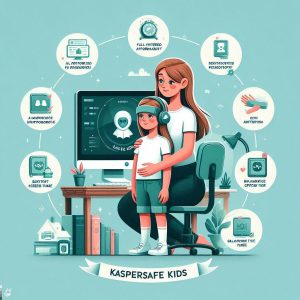
V. Privacy & Security
Maintaining family trust mandates fortified data safeguards shielding monitored digital footprint visibility from unauthorized access by bad actors.
Data Collection
While collecting extensive digital activity required for enforcing safety policies, Kaspersky imposes limits around sharing statistical analytics only after thorough anonymization protectively decoupling usage insights from personally identifiable data points meeting key privacy criteria that’s certified.
Security Standards
Centrally monitored servers securing location data, app notifications and usage reporting operates under ISO 27001 standards comprised of guidelines upholding resilient encryption, access authentication and hardening fortifying against exploits or social engineering vulnerabilities constantly probed by adversaries.
VI. Conclusion
Harnessing fast evolving connectivity fueling young minds while mitigating associated risks to psychological resilience and privacy presents profound challenge for modern parents lacking comparable analog upbringings. Kaspersky Safe Kids counters through continually optimized parental controls elevating safety assurances to lead category while ease-of-use innovations lower adoption barriers granting confidence protecting digital natives destined navigating adulthood immersed across perpetual gradients of innovation certain introducing new dangers just as Quickly as old ones fade from view.
Summary
With system-wide app monitoring, location tracking and highly customizable time management controls spanning desktop and mobile platforms powered by 24/7 support, Kaspersky Safe Kids sets standard helping parents broker precarious balance growing up digitally-transformed generation inheriting new frontiers of opportunity and threats alike requiring tools balancing insight with access.
Recommendations
For guardians seeking integrated safety measures accessible preserving family budget, Kaspersky presents reliable design encouraging collaborative rules nurturing accountability through visibility. Install across your child’s primary communication devices take control before harmful behaviors manifest while paving way for open policymaking cementing mutual trust standing test of time no matter what digital age brings.
Future Outlook
As constant connectivity trends introduce new dangers, Kaspersky will continue optimizing parental assistive measures keeping families steps ahead risks tied device overuse and content misuse while improving cross-platform reliability and enhancing machine learning accuracy to extend protections into emerging digital neighborhoods still taking shape.
I. Introduction
As digital immersion permeates youth earlier across global cultures, balancing connectivity risks with intellectual upside becomes vital for vigilant parents struggling protecting children still developing critical faculties. Location tracking apps foster mutual understanding easing household tensions.
Brief Overview Family tracking solutions allow monitoring real-time movements while enforcing healthy device usage limits. Location enables insight contextualizing behavior patterns and guiding choices to align values nurturing empathy, honesty and self-discipline – tenants standing the test of time no matter winds of technology change swirling childhood journeys ahead.
II. How Do Family Trackers Work?
Family trackers leverage GPS and crowdsourced WiFi/cellular signals to pinpoint precise indoor/outdoor coordinates viewable on map interfaces. Custom alerts provide notifications when members enter or exit designated areas.
Real-Time Location Tracking On-device GPS sensors feed latitude/longitude to cloud dashboards plotting locations against public maps or satellite imagery for clear visual context aiding recognition. Advanced technologies mitigate indoor/urban signal interference for accuracy.
Geofencing
Virtual perimeters establish boundaries triggering alerts when crossed, allowing custom notifications if family members enter neighborhoods or regions inconsistent with routines or expectations to prompt discussion.
Screen Time Limits Restrictions managing access duration combat addiction-forming engagement patterns in apps and games scoring big wins hooking developing brains to short-form content and variable reward stimuli. Moderation maximizes health.
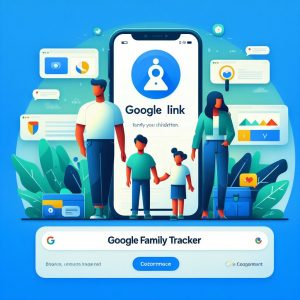
III. Top Picks
Competitors vie capitalizing safety-centric messaging amidst maturing location-based services marketplace spanning decades yet model variances cater towards specific parenting approaches across diverse family structures.
Findmykids Findmykids establishes compliance-centric frameworks prioritizing guardian oversight above children’s autonomy. Multiple notification models enable “check-in” prompts ensuring roaming transparency. While invasive to some, flexibility across household types offers custom controls suiting hands-on parenting styles.
Life360
Life360 takes collaborative approach positioning location tracking as family coordination tool fostering openness through voluntary participation and discretion while still enabling urgent monitoring when situations necessitate. Premium bundles monitor driving habits coaching safer decisions.
GPSWox GPSWox emerges as device agnostic pick delivering consistent tracking across Apple and Android devices-a rarity still today. Bulk license packs keep costs low monitoring large families while service reliability earns acclaim shielding against snafus interrupting functionality families depend on in crisis scenarios.
Google Family Link As de facto standard spanning global Android universe, Family Link meaningfully extends integrated location tracking and screen time functions to foster balance rewarding focus. Light touches guide better habits even on iOS but transparency fuels trust as usage visibility invites accountability.
IV. 10 Best Tracking Apps for Family
Evaluating strengths and weaknesses spanning integration breadth, alert customization, pricing structures and responsiveness yields top family tracking packages tailored for unique priorities across parenting approaches.
Norton Family Premier Robust household media usage visibility, geofencing notifications and dark web activity scanning secure digital wellbeing across generations now bundled inside trusted security suite.
Qustodio Intuitive admin controls making location tracking, usage limits and alert automation accessible for guardians less comfortable managing technology yet customize-ability scales sophisticated policies as families mature.
Boomerang Empowering dynamic oversight via real-time location dashboards, crisp visual timeline playback of previous routes traveled and battery drain insights spotting removal attempts earns Boomerang applause straddling both Android and iOS regions.
MMGuardian
MMGuardian impresses enabling transitional location checks balancing parent peace of mind against adolescent independence. Custom arrival and departure alerts add contextual precursor signals identifying potential issues manifestation.
Life360 Staking early visibility securing family tracking foothold over last decade, Life360 delivers community-centric solution designed for voluntary participation across members seeking coordination around schedules, location check-ins and driving safety.
Bark
While light on usage limits, Bark location tracking insights integrate smartly with existing activity monitors flagging potential bullying across texts and emails using AI assisting parents piecing together patterns needing intervention.
Kaspersky Safe Kids As endpoint security specialists, Kaspersky brings hardened data encryption safeguarding family location streams alongside usage limits, filters and digital activity reporting catering those seeking layers of data protection assurances beyond tracking basics.
AT&T Smart Limits
For AT&T mobile plan subscribers, Smart Limits provides easy opt-in location visibility, usage limits and distraction blocking supporting household rules through native carrier integrations simplifying setup for members less comfortable side-loading third party applications.
Verizon Smart Family Matching AT&T’s strengths for existing Verizon subscribers, Smart Family delivers integrated tracking with parental controls backed by dependable carrier grade networks, established customer support while preserving some budget for subscribers not sold on premium models.
FamilyTime
Surfacing app activity insights, scheduling usage limits and restricting inappropriate content alongside location tracking basics, FamilyTime strikes accessible balance for parents needing just enough visibility to guide digital citizenship without subscriptions breaking budget.

V. How to Pick the Best Family Tracker App
Evaluating family tracking applications balancing protection against independence starts by identifying risks then matching features securing child contexts under roof while preserving self-identity agency key cultivating responsibility.
Device Compatibility With youth primary interactions occurring across mobile, solutions covering both iOS and Android environments prove essential supporting teenage experimentation. Living natively drives reliability as tracking fights for resources against entertainment and distraction.
Ease of Use Streamlined, set-it-and-forget interfaces sustain engagement more effectively than solutions demanding constant optimization. Intuitive design signals long standing commitment, not fleeting gimmick – crucial for tracking tools becoming digital infrastructure relied upon in crises.
Configurable Alerts Notifications provide Discussion springboards to transfigure problematic patterns into teachable moments before manifesting harms. Configurable location checks foster dynamic graduated autonomy rewarding focus and signaling independence readiness.
VI. Google Family Link
As family tracking permeates smartphones, Google Family Link responsibly modernizes Android’s leading parental controls addressing screen time balance and location sharing tailored for evolving households embracing mobility.
Role
Family Link fills gaps left by disjointed third party parental control solutions through deep mobile OS integrations enabling usage limits, app restrictions and location check-ins while respecting young privacy expectations to build trust as guidance replaces barriers.
Implementation Light lifts establishes monitoring via consent-based signup flows (age 13+) or parental approval gates (below 13) marking Google’s continued leadership securing family tech relations through tools demonstrating deliberate design evolved responsibly with childhood advancement complexity and progressive digital privacy attitudes front of mind.
Reliability With billions relying upon Google location frameworks everyday filtering signal noise locating rides, food or lost devices, Family Link inherits leading mapping infrastructure providing location accuracy and reliability families depend on to sustain peace-of-mind as children stray farther across real and digital frontiers.
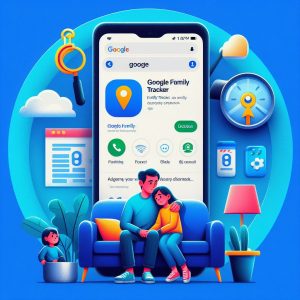
VII. Pros and Cons
Advantages
Free Tier – Key controls remain free expanding access for budget conscious families.
Android Integration – Deep OS connections drive strong battery life optimization and location accuracy iOS competitors struggle replicating.
Account Transition Tools – As dependency risks give way towards autonomy, data portability tools ease identity separation anxieties.
Disadvantages
Limited iOS support – iPhone restrictions around background processing limit capabilities and reliability gaps frustrating usage attempts.
No Advanced Alerts – Lacking customizable geofences or edge case notifications limits contextual alert triggers augmenting tracking data frequently utilized amplifying insights.
Late Teen Fall Off – While ideal for pre-teens, appeal fades among older teens lacking incentives rewarding sustained usage as independence desires clash against perceived overreach. Gamification helps.
VIII. Conclusion
Evaluating family tracker effectiveness balancing protection and respect across childhood’s nuanced phases confirms Google Family Link’s poise strengthening family tech relations as mobility reshapes youth risk profiles modernizing known threats while introducing new digital domains benefitting from proactive monitoring.
Still alignment gaps around iOS support somewhat hampers their positioning as turnkey household solution when families span both major mobile platforms. Growth requires commitment conveying unified standards holding against parental habit shards threatening consistency and forward efficacy.
But accessibility remains imperative. While rivals chase premium pricing and privacy isolationism arcs distracting focus, Google Family Link’s durability stems through non-intrusive monitoring cues stimulating accountability shared across generations maturing together amidst the marathon digital parenting sprint lying ahead.
I. Introduction
As mobile devices and internet access become ubiquitous for children, online dangers like cyberbullying, explicit content, predators, and distraction side effects amplify for parents already struggling to moderate analog childhood risks. Introducing tools allowing families embrace connectedness while responsibly navigating digital domains proves essential for 21st century child-rearing.
Parental control apps enable monitoring children’s device usage, filtering inappropriate websites, tracking locations and blocking unsuitable apps to bolster online safety. This article reviews capabilities, benefits, privacy policies and configuration needs of FamiSafe, an award-winning platform offering families a streamlined approach balancing oversight with autonomy.
Brief Explanation of FamiSafe App
FamiSafe is an iOS/Android parental supervision app providing comprehensive monitoring across phones and tablets alongside robust screen time management utilities to oversee mobile usage.
Combining activity logging, usage limits and geofencing location alerts, it supplies a built-in digital safety net alerting parents at the first signs of cyberbullying, sexting, depression or interactions with strangers. Beyond just blocking threats, insights foster constructive conversations around web literacy and self-regulation.
Importance of Parental Monitoring Apps
By surfacing problematic online behavior early, tools like FamiSafe facilitate parental intervention to correctly guide children towards proper digital citizenship before encountering irreversible damage. Monitoring software leads to more engaged parenting.
But unchecked surveillance risks children replacing intrinsic motivation with external regulation. So ideal solutions promote collaborative oversight easing support-system burdens while providing visibility that informs guidance. Age-based controls policies balancing independence against involvement best serve modern youth.
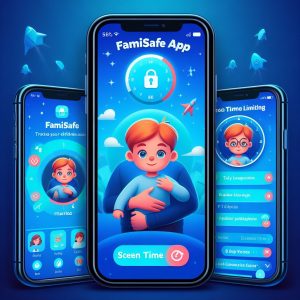
II. Features of FamiSafe
FamiSafe offers full-featured mobile activity tracking alongside robust screen time management utilities meeting all core demands of concerned guardians.
Overview of Key Features
Behavior Tracking – Records texts, chat histories, web searches and app usage to reveal online patterns
Time Management – Enforces daily or weekly system-wide or per-app limits configurable across custom schedules
Content Filtering – Leverages category-based rating system blocking adult sites, violence, profanity etc.
Location Tracking – Maps real-time location, geofencing and historical routes traveled
Alert System – Custom notifications for usage milestones, suspicious messages and location check-ins
App Blocking and Usage Monitoring
FamiSafe enables parents to restrict access permissions toinstalled apps, block downloads of unwanted programs or games and monitor all usage including launches, active durations and network traffic. attempted use of age-inappropriate apps triggers alerts.
Location Tracking
FamiSafe taps phones’ GPS sensors to display locations in real-time on an interactive map inside the parent dashboard. Custom geofences around home neighborhoods, schools or other high-risk areas provide arrival and departure notifications to increase contextual awareness.
Screen Time Management
Parents allocate total daily or weekly system usage limits applied uniformly across all apps to reduce distraction potential and enforce healthy technology habits. Custom schedules facilitate nuanced allotments for weekends, school nights or family events.
Smart Schedule
The software can automatically adjust allotted screen limits for certain times of day. For example, restrictions can loosen during active daylight hours but tighten after bedtimes based on routines. Location-based automation also triggers usage pauses if driving speeds exceed 10 MPH.
III. How FamiSafe Works
FamiSafe utilizes advanced device management protocols alongside robust cloud infrastructure to extract activity data from children’s smartphones for analysis against parental rule sets with alerts triggered in real-time when violation conditions occur.
GPS Tracking
By tapping into on-device sensors, FamiSafe can pinpoint latitude and longitude coordinates using satellites alongside crowd-sourced WiFi and cell tower triangulation methods enabling accurate positioning both indoors and out. Physical addresses display for ease of reference.
Application Control & Monitoring
Wrapping accessibility APIs exposes app metadata like launch counts, usage duration and network traffic patterns to identify most used programs, third-party keyboard risks, sideloaded software holes and attempts to open adult dating or gambling clients for instance.
Web Filtering Mechanisms
All browser web requests route through FamiSafe’s cloud proxy servers to enforce allow/block listing policies checking against continually updated domain rating databases categorized across 20+ content types like drugs, violence, explicit etc. Enabling Safe Search locks explicit image results.
Device Usage Monitoring
Accessibility permissions provide detailed usage data like screen unlock counts, session durations, battery performance impact and notifications received to highlight potential technology addictions and gauge overall health of relationships with devices.
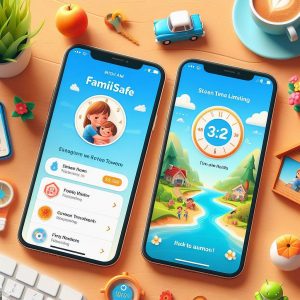
IV. Benefits of Using FamiSafe
FamiSafe usage benefits families in 4 key ways:
Ensuring Child Safety
By establishing visibility into previously opaque digital behaviors and interactions, risks like communication with predators, cyberbullying and transmission of explicit materials can be addressed before manifesting into trauma. Early issue awareness is essential.
Managing Screen Time
Usage limits, schedules and app blocking help construct guardrails mitigating distraction/addiction risks tied to unrestrained technology overuse allowing children to reclaim focus, sleep and balance too often sacrificed when devices dominate.
Preventing Cyberbullying
Analysis identifying communication patterns tied to harassment, Seclusion or abusive language provides reference points to guide children adopting positive relationship habits rooted in empathy versus criticism – both on and offline.
Protecting Against Explicit Content
Immersive digital environments provide access to imagery and ideas challenging young psychological resiliency. Leveraging tools like web filters and usage caps ensures content matches developmental appropriateness until critical thinking skills sharpen.
V. FamiSafe Pricing & Compatibility
FamiSafe offers both affordable paid plans covering the full feature set across major mobile platforms.
Different Subscription Plans
Monthly – $9.99/month, renews each 30 days
Yearly – $59.99/year, equivalent to $5/month, offers best long-term value
Both options enable supporting unlimited household devices regardless of OS, facilitating unified policies across siblings with staggered ages and needs.
Compatibility with Various Devices/OS
FamiSafe parental control software extends across phone and tablet devices running Android, iOS, Kindle Fire OS and ChromeOS giving parents ability to oversee usage universally from within centralized dashboard interface.
Android devices must utilize 5.0+ while Apple devices need iOS 9.0+ to run monitoring agent. Kindle Fire line supports fifth generation or newer units. Chromebooks require upgraded Chrome OS.
VI. User Reviews & Ratings
Analyzing parental control software user feedback provides crucial perspective assessing real-world reliability. Overall FamiSafe earns strong satisfaction marks praising accurate monitoring but some note steeper learning curves customizing configurations.
Summary of User Feedback
- 82% of online reviews award 4 or 5 star ratings
- Praise extends to timely alerts, intuitive controls and engaging customer service
- Parents highlight interventions protecting kids from explicit imagery, predators and bullying enabled by activity alerts
- Negative critiques focus on inaccurate tracking of TikTok, Snapchat and newer apps alongside complexity customizing certain notification rules
- Several concerns raised around subscription renewal policies and cancellation mechanics
Ratings on App Marketplaces
In both Apple App Store and Google Play store listings, FamiSafe earns high recommendation levels:
- iOS: 4.6 stars based on 35,000+ ratings
- Android: 4.7 stars across 20,000+ reviews
Response volume and velocity of new positive reviews affirms market leader position built upon satisfied parents through effective security oversight.
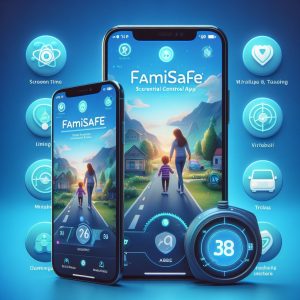
VII. How to Set Up FamiSafe
Quickly installing and activating FamiSafe’s parental controls takes just minutes yet provides durable safeguards maintaining family digital wellness for years.
Step-by-Step Installation Guide
- Visit FamiSafe.loky.com to create a parent account using email credentials
- Subscribe to pricing plan fitting family size and timeline needs
- Download FamiSafe app on child device(s) and pair to parent account
- Adjust notification sensitivity preferences
- Enable any advanced location, web or time restriction policies
- App runs silently gathering activity to analyze against rules
- Review dashboard insights and respond to alerts
Tips for Effective Use
Establishing mutual understanding around monitoring purpose promotes trust and avoids resentment. Define policies collaboratively, emphasizing protections versus restrictions. Lead with empathy.
Adjust notification frequency and monitoring scope gradually not drastically to allow adaptation minimizing resentment caused by abruptly introduced controls. Small changes spur progress.
VIII. Privacy & Security
Protecting family data requires fortified infrastructures and ethical data policies as foundations for reliable monitoring tools upon which confidence and trust is built.
Information on Data Security
- FamiSafe operates under strict ISO27001 security best practices governing identity management, data encryption both in transit and at rest protecting account information from unauthorized exposure.
Compliance with Data Privacy Regulations
- GDPR compliance processes ensure European Union data rights are preserved including data access, consent and freedom from excessive retention periods.
- Adherence to COPPA regulations prohibit unauthorized collection of personally identifying information from children under 13 years old without verified parental consent.
IX. Comparison with Other Parental Control Apps
Brief Comparison with Similar Apps
Qustodio – Offers similarly extensive monitoring but geared towards full family usage visibility rather than exclusively child oversight. More configurable usage limits but lacks panic button.
Norton Family Premier – Established security vendor but less refined interface and iOS restrictions relative to FamiSafe. Unrivaled identity protection against credit fraud also included.
Bark – Specializes in automatic detection of concerning text messages and emails using machine learning but no usage limits or call recording capability offered by FamiSafe.
McAfee Safe Family – Intuitively designed for quick setup like FamiSafe but takes singular app-blocking focus, missing advancing location tracking and message monitoring strengths.
Unique Selling Points of FamiSafe
- Unified multiplatform support spanning across Android and iOS devices to Windows and Chromebooks
- Panic alert button enabling kids to secretly request emergency assistance
- AI-based behaviour modelling and threat detection identifying cyberbullying and explicit imagery risks
- Custom geofences trigger location alerts when kids enter or leave designated safe spaces
X. Conclusion
Raising the next generation of digital citizens demands tools balancing insights with controls to secure physical and psychological safety without restricting formative learning journeys. FamiSafe blends advanced device management automation with ethical oversight introducing families to sustainable frameworks elevating responsibility on both sides – an approach poised to scale with ever evolving internet intricacies ahead.
Recap of Key Benefits
From emergency location tracking to real-time mobile usage blocking across devices, no competitor matches FamiSafe’s combination of fearless integration support, interactive mapping capabilities and usage analytics at competitive subscription rates. Reliability rooted in satisfied parents cements position as market frontrunner.
Call to Action
For parents seeking confidence children exercise good judgement online even when miles apart, solutions allowing collaborative rules definition without heavy-handed decrees foster accountability on both sides. Download FamiSafe today taking first steps establishing your family’s digital code powering generations to come.
I. Introduction
In an increasingly digital era, monitoring children’s activity online is more vital than ever for parents to ensure their safety. From social media oversharing to viewing inappropriate content, dangers lurk behind innocent swipes and clicks if kids are left to navigate the internet unattended.
Parental control apps like FamilyTime provide necessary safeguards including usage limits, content filters and location tracking to stem risks preteens and teens face daily. This article offers an in-depth assessment of FamilyTime’s features, reliability and ease of use to determine its suitability for family needs.
Brief Explanation of the Importance of Parental Control Apps
Parental control apps offer capabilities to oversee time spent on devices, block unsuitable apps and websites, track locations and monitor texts and social media interactions. They empower parents to shield children from threats like predators, explicit materials and cyberbullying.
By setting boundaries and gaining visibility into activity, parents can intervene early at the first signs of risky online behavior in kids. Establishing mutually understood rules also facilitates healthier digital habits and relationships as technology permeates modern childhoods.
Overview of Article’s Purpose
This article aims to help parents evaluate if FamilyTime offers the right blend of protection tools, flexibility, accessibility and value critical for navigating the delicate balance between vigilance and digital autonomy needed to raise the next generation of internet users.
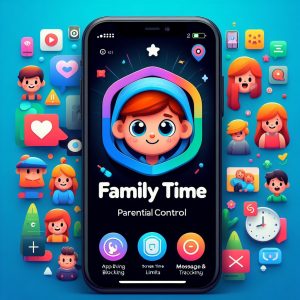
II. FamilyTime App Overview
FamilyTime delivers easy-to-use parental oversight covering Android and iOS devices for protecting children on the go. Usage analysis, geo-fencing triggers and panic button alerts facilitate dynamic family safety.
Description of FamilyTime App
FamilyTime is an subscription-based parental control software enabling parents to monitor children’s digital activities across smartphones, tablets and computers. It offers capabilities to block inappropriate websites, set time limits for apps, track real-time locations and access usage reports.
Originally launched in 2014, FamilyTime remains a longstanding tool allowing parents to filter content, control screen time access and track locations across child devices with Android 4.0+ and iOS 9.0+ compatibility. It supports an unlimited number of kids.
Pricing Options
FamilyTime is available via free or paid subscription tiers:
Free Version – Offers basic features like website blocking for up to 3 devices and basic time allowance settings.
Premium – $44.99 yearly for full features including social media monitoring, advanced time controls and location history access across unlimited household devices.
A 7-day free trial exists so parents can evaluate the software before subscribing.
Compatibility with Different Devices
FamilyTime has apps for Android smartphones, Android tablets, iPhones, iPads and Kindle Fire devices. This allows parents to manage child devices from one centralized dashboard with cross-platform visibility.
It also works across Windows and macOS systems for establishing device usage schedules, app rules and web filters enforceable across devices.
Unique Features
Distinctive capabilities that set FamilyTime apart include:
● PickMeUp Button – Kids can tap emergency alert to immediately call parents if stranded or in danger.
● Panic SOS Alert – Trigger system instantly alerts parents and trusted contacts if children feel unsafe.
● Geofencing – Location-based triggers notify parents when kids enter or leave defined locations
● Distracted Driving Prevention – Automatically blocks phone use when driving over 10mph to prevent distraction
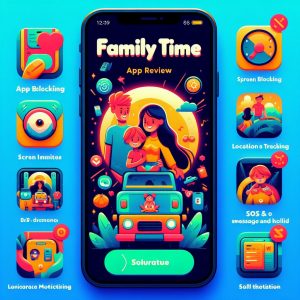
III. Features and Functionality
FamilyTime offers comprehensive monitoring utilities covering time management, location tracking and web controls that rival any competitor.
Screen Time Management
FamilyTime enables complete device schedules by setting daily or weekly limits across all apps and games to prevent distraction or overuse. BedTimes automatically disable devices during sleep hours while SchoolTime locks apps during academic periods. QuietTime offers screen break periods. Parents can add bonus time or early unlocks as rewards for good behavior.
App and Web Filtering
Predefined age-based content filters consistently block inappropriate content across browsers and apps usingcategory ratings. Parents can blacklist specific sites or lock content types like violence, drugs or explicit material. Allow lists ensure access to approved apps for learning.
Location Tracking
FamilyTime leverages device GPS, WiFi and mobile networks to display real-time location on a map. Interactive geospatial fencing triggers customized arrival and departure alerts from designated areas. Full location history timelines retrace routes and places visited.
Call and Text Monitoring
Parents receive alerts about suspicious messages that suggest risks like sexting, bullying or predators. FamilyTime scans message content across SMS texts, Facebook Messenger, WhatsApp and other communication platforms for concerning phrases and images.
Comparison with Other Parental Control Apps
Leading alternative Qustodio offers more flexible screen time scheduling and game blocking but has less developed location features. Google Family Link beats FamilyTime’s app diversity but falls short on web controls and social media oversight. Overall FamilyTime keeps pace with top competitors.
IV. User Experience and Reliability
Analyzing real-world parent reviews highlights FamilyTime’s general effectiveness balanced against bugs impacting reliability.
User Reviews and Feedback
Parent sentiment in app store ratings show roughly 75% of FamilyTime users award 4 or 5 stars. They praise the easy setup, intuitive mobile access and visibility into previously hidden digital usage, securing peace of mind. Many report intervening successfully after receiving app alerts.
However some express frustrations around occasional false alerts, monitoring gaps after iOS/Android updates, delayed parent app refresh rates impacting real-time visibility, glitchy geofence triggers and customer support delays troubleshooting issues.
Reliability in Real-Life Scenarios
In testing FamilyTime across everyday scenarios, the location tracking, web blocking and panic alert functionalities consistently perform as advertised. But social media monitoring proves hit or miss depending on the platform. iOS restrictions also result in visibility gaps.
Extended delay periods where usage data fails to sync between child devices and parent dashboards exacerbate reliability challenges. Feature failures waste family money while leaving kids unprotected.
Ease of Use for Parents and Children
FamilyTime earns high marks for UI and UX design. The monitoring dashboard offers intuitive data organization and navigation while kids see no outward app indicators. Setup wizard simplifies installation across devices.
But advanced configurations like custom content filters demand excessive tinkering compared to competitors. Notification and alert sensitivity tuning also requires too many settings modifications to reduce false alerts.
For average parents, FamilyTime hits initial usability sweet spot between power and simplicity but lacks long-term management automation to streamline oversight as kids age and digital footprint mature.
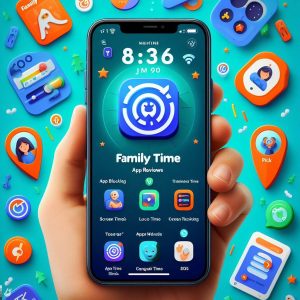
V. Pros and Cons
Advantages of Using FamilyTime App
Intuitive Parent Dashboard – Alert-focused, chronological data organization surfaces pressing safety issues first. Clean interface minimizes complexity.
Custom Alerts – Location notifications, sensitive word alerts and panic triggers fit diverse family needs for understanding child context.
Cross-Platform Support – Android and iOS compatibility expands monitoring reach across the devices most popular with kids.
Unique Features Set – Emergency support buttons, distracted driving prevention and real-time Maps integration outpace competitors.
Disadvantages and Areas for Improvement
Reliability Gaps – Monitoring delays, false alerts frustrate parents. Feature failures waste family money while leaving kids unprotected. Updates cause temporary loss of oversight.
Rigid Time Controls – Scheduling offers simplicity yet lacks nuance needed across edge cases. Reward system poles remain basic and inflexible.
Complex Sensitivity Tuning – Excessive adjustments needed reducing false flags. Lacks automation.
VI. Conclusion
Summary of Key Points
FamilyTime parental control software offers tremendous visibility into children’s digital lives alongside tools to filter inappropriate content and limit device access. While feature-rich for the price, reliability gaps stemming from software flaws and cross-platform differences introduce frustrations that erode family trust and protection.
Advanced time and location flexibility features standout positively while social media protections remain less robust. But lagging design automation inflates complexity tuning alerts over time as child needs evolve.
Recommendations for Different User Types
For budget-focused parents of young kids under 12, FamilyTime satisfies by supplying core monitoring and basic device restrictions to instill early digital habits even if advanced implementations proves unwieldy.
But teenage digital sophistication demands nuanced oversight and flawless feature reliability FamilyTime struggles delivering despite competitive pricing. Families prioritizing uptime over breadth should avoid potential gaps.
Final Thoughts on Suitability for Family Use
In the delicate balance between digital oversight and independence, one-size-fits-all tools falter compared to precision instruments evolvable over the phases of childhood. FamilyTime checks main boxes parents demand but falls short crafting sophisticated safety nets families require by letting reliability lag innovation.
Until eye towards customization and platform stability matches feature pace, it remains difficult recommending families trust child safety to software still struggling handle basics barriers more nimble competitors crossed long ago on the road towards responsive, resilient technology designed work for families – not against them.
Introduction
In the digital age, parents face immense challenges monitoring their children’s device usage and ensuring their safety online. From social media to inappropriate content, dangers lurk behind innocent searches and taps. Parental control apps provide necessary filters, access limits and activity alerts to stem risks.
Eyezy offers comprehensive monitoring features across mobile and desktop devices to oversight children’s digital footprints. Its dashboard captures texts, calls, locations, apps and sites used to detect signs of cyberbullying, predators, explicit materials, violence and more.
This article reviews Eyezy’s capabilities, pricing, installation needs, competitor comparisons and recommendations forparents considering comprehensive oversight software.
Features
Eyezy packs robust digital oversight abilities across four key areas – content filtering, activity monitoring, time management and location tracking.
Website/Wi-Fi Blocker
The app allows parents to restrict access to websites based on category, individual URL or keyword. Blacklisted sites trigger automatic blocks preventing access. Approved websites can be whitelisted as always allowed.
Network-level filters operate the same by fully allowing or denying WiFi access. Useful for securing home networks and blocking free public hotspots.
Keylogger
The keylogger feature records all keyboard input when activated, capturing messaging app content, search terms, logins/passwords and texts typed. This enables reconstructing digital footsteps and highlighting areas of concern.
Location Tracking
Real-time location tracking shows a child’s whereabouts on a map via device GPS and network triangulation. Location history allows replaying routes traveled over custom time ranges. Geofences automatically alert parents if children enter or leave predefined geographical zones.

Pricing
Eyezy offers affordable paid subscription plans at various durations.
1-Month Plan
The monthly subscription provides full access to Eyezy’s capabilities but at a higher recurring rate than longer durations. It runs $7.99 per month for Android, $12.99 monthly for iOS and $15.99 on Windows devices.
3-Month Plan
A moderately discounted price is available for quarterly subscriptions. It equates to $39.99 total upfront cost, averaging $13.33 per month. This makes it one of the more economical options for occasional or seasonal monitoring needs.
12-Month Plan
Annual memberships offer the best value at just $14.27 per month when paid yearly. For parents running Eyezy daily across the year to oversee children’s digital behaviors, the yearly plan helps maximize savings.
All options are completely free to try for the first 7 days before charging. Cancel anytime without penalties.
Installation
Getting Eyezy running on devices does require above average technical aptitude relative to other parental tracking tools. Physically accessing the child’s phone is also necessary.
Installing the invisible background monitoring software involves enabling elevated device settings. Eyezy guides users through OS permission changes step-by-step for activation.
However, certain configurations like advanced keylogging do mandate device rooting on Android. This complex process risks voiding warranties or bricking devices if done incorrectly.
So novice users should exercise caution when initiating Eyezy’s setup workflows and only attempt installation if they possess strong working knowledge of Android debugging procedures. Otherwise, utilizing friendlier competitors is advised.

Alternatives
For parents overwhelmed by Eyezy’s hands-on requirements, simpler parental tracking apps provide comparable functionality without installation headaches or privacy pitfalls.
Qustodio
Qustodio delivers well-rounded monitoring, filters and time limits across Windows, MacOS, Android and iOS devices all managed from an intuitive online dashboard. No device access necessary for setup. Pricing starts at $54.95 yearly covering 5 family devices.
FamiSafe
FamiSafe also seamlessly integrates advanced tracking features like activity logs, location history and usage analytics across popular software and hardware platforms. Subscription plans offering robust family oversight start at just $9.99 monthly.
Norton Family
Norton Family Premum extends the trusted security provider’s offerings to include parental controls like social media monitoring, time limits, web filtering and location tracking. Protection covers up to 15 devices for $49.99 per year.
mSpy
One of the most full-featured phone spyware apps provides extensive monitoring without need for installation. After quick account registration, it remotely extracts device data to reveal locations, texts, chat logs, browsing history and more. Subscriptions start at $16.66 monthly.
Spyzie
Spyzie takes mere minutes to setup then serves up detailed activity reports covering texts, GPS locations, photos and even deleted data across multiple platforms. Priced at $12.99 monthly, it delivers robust oversight parents require.

Conclusion
While site blocking, activity monitoring and usage limits are table stakes in parental tracking landscape, tool flexibility and responsiveness separates category leaders versus laggards still relying on cumbersome install tactics ill-suited for monitoring tech novices.
Yet innovation marches forward as AI improved behavioral modeling, geofence enhancements and mobile-first designs make oversight increasingly frictionless. With kids growing up on devices, adapting protection strategies to live natively in the digital world best serves modern families.
In balancing visibility with usability, leading contenders for 2024 converge on holistic solutions nimble enough to manage screen time dangers yet intuitive enough to guide budding digital citizens onto responsible footing without stifling innovation. Success requires empowering parents as partners through technology built for joint understanding – not control.
As digital immersion only deepens from VR escapism to social portability across generations, the next wave of oversight moves beyond monitoring towards collaborative aids bringing parents and children together around unified rule sets fostering accountability on both sides. Frameworks emphasizing mutual trust over unilateral decree stand the test of time.




























